Formative and summative assessments are crucial tools in the educational landscape, each serving distinct purposes. Formative assessments provide ongoing feedback to support and enhance student learning, while summative assessments evaluate overall student performance and curriculum effectiveness. Understanding the key differences, benefits, and best practices of these assessments is essential for educators and parents alike. This article delves into the definitions and purposes of formative and summative assessments, compares their unique attributes, explores their respective benefits, and offers practical examples and strategies for effective implementation, addressing potential challenges and solutions along the way.
gameshoek.com will lead an exploration of this topic in detail.
1. Definitions and Purpose: Overview of formative and summative assessments, including their primary goals.
Formative and summative assessments are integral components of the educational process, each with distinct definitions and purposes. Formative assessments are conducted throughout the learning process to monitor student progress, provide ongoing feedback, and adjust teaching strategies to enhance learning outcomes. These assessments are typically informal and can include activities such as quizzes, class discussions, and peer reviews. The primary goal of formative assessments is to identify areas where students may need additional support and to guide instructional decisions that improve learning.
On the other hand, summative assessments are administered at the end of an instructional period to evaluate overall student achievement and the effectiveness of the curriculum. These assessments are usually more formal and standardized, encompassing final exams, end-of-term projects, and standardized tests. The main objective of summative assessments is to measure the extent of student learning, determine grades, and evaluate the overall effectiveness of educational programs. By understanding the definitions and purposes of both formative and summative assessments, educators and parents can better utilize these tools to support student growth and achievement.
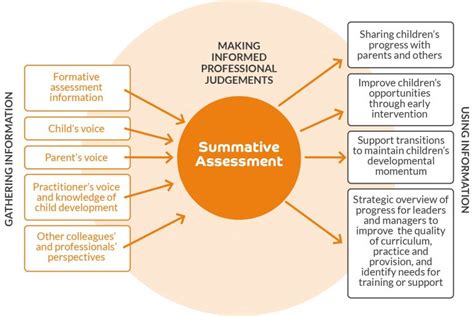
2. Key Differences: Comparison of formative and summative assessments in terms of timing, objectives, and application.
Formative and summative assessments differ significantly in terms of timing, objectives, and application. Formative assessments are conducted continuously throughout the instructional period, allowing teachers to monitor student progress in real-time and make necessary adjustments to their teaching strategies. Their primary objective is to provide immediate feedback to students, helping them identify strengths and areas for improvement, thus enhancing the learning process.
In contrast, summative assessments occur at the conclusion of an instructional period, such as the end of a unit, term, or academic year. The main objective of summative assessments is to evaluate and document students’ overall learning achievements and the effectiveness of the educational program. These assessments are typically high-stakes and standardized, with applications in determining final grades, certifying competency, and informing curriculum decisions.
Understanding these key differences allows educators to effectively integrate both types of assessments, ensuring a comprehensive evaluation of student learning and instructional effectiveness.

3. Benefits of Formative Assessments: How formative assessments support ongoing learning and provide real-time feedback.
Formative assessments offer numerous benefits that support ongoing learning and provide real-time feedback to both students and educators. By incorporating formative assessments into daily instruction, teachers can continuously monitor student progress and quickly identify areas where students may be struggling. This immediate feedback allows educators to adjust their teaching methods and provide targeted support, ensuring that all students have the opportunity to improve and succeed.
Formative assessments also empower students by involving them in their own learning process. Regular feedback helps students understand their strengths and weaknesses, fostering a growth mindset and encouraging them to take an active role in their education. Moreover, these assessments can be tailored to individual learning styles and needs, making them highly flexible and adaptable.
Overall, formative assessments enhance the learning experience by creating a dynamic, responsive educational environment where ongoing feedback and adjustments lead to better student outcomes and a deeper understanding of the material.
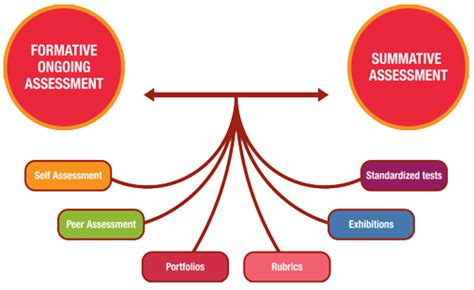
4. Benefits of Summative Assessments: The role of summative assessments in evaluating overall student performance and curriculum effectiveness.
Summative assessments play a crucial role in evaluating overall student performance and the effectiveness of the curriculum. By administering these assessments at the end of an instructional period, educators can measure students’ cumulative knowledge and skills, providing a clear picture of their academic achievements. This comprehensive evaluation helps in determining grades, certifying student competency, and identifying areas where students excel or need further improvement.
Additionally, summative assessments are essential for assessing the effectiveness of educational programs and curricula. By analyzing the results, educators and administrators can identify trends and patterns in student performance, which can inform future instructional strategies and curriculum development. This data-driven approach ensures that educational programs remain relevant and effective in meeting students’ needs.
Summative assessments also provide accountability for both students and educators. They offer an objective measure of student learning and progress, which can be used to evaluate teacher effectiveness and inform professional development. Ultimately, summative assessments are vital for ensuring that educational objectives are met and for fostering continuous improvement in teaching and learning practices.

5. Examples of Formative Assessments: Practical examples such as quizzes, peer reviews, and classroom discussions.
Formative assessments encompass a variety of practical tools and activities designed to gauge student understanding and provide ongoing feedback. One common example is the use of quizzes. These short, informal tests help teachers quickly assess students’ grasp of recent material, allowing for immediate intervention if misunderstandings are detected.
Peer reviews are another effective formative assessment method. By evaluating each other’s work, students can gain new perspectives and insights, fostering a collaborative learning environment. This process also helps students develop critical thinking and evaluative skills, which are essential for their academic growth.
Classroom discussions serve as a dynamic formative assessment tool. Through guided discussions, teachers can observe students’ comprehension and engagement with the subject matter. These discussions encourage active participation and allow students to articulate their thoughts and questions, providing teachers with valuable insights into their learning progress.
Other examples include exit tickets, where students write a brief summary of what they learned at the end of a lesson, and concept maps, which visually represent students’ understanding of key concepts. These formative assessment techniques are instrumental in creating a responsive and adaptive learning environment, ensuring that teaching strategies are continually refined to meet students’ needs.
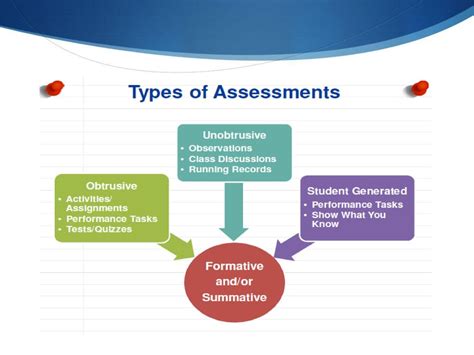
6. Examples of Summative Assessments: Common summative assessment methods like final exams, standardized tests, and end-of-term projects.
Summative assessments typically involve more formal and comprehensive methods to evaluate student learning at the end of an instructional period. One of the most common summative assessment methods is the final exam. These exams are designed to assess students’ understanding of the entire course content, providing a clear measure of their knowledge and skills accumulated over the term.
Standardized tests are another prevalent form of summative assessment. These tests are administered and scored consistently across all test-takers, allowing for comparisons of student performance on a larger scale. Standardized tests are often used for high-stakes decisions, such as college admissions, graduation eligibility, and educational accountability.
End-of-term projects are also widely used as summative assessments. These projects require students to apply their knowledge and skills to complete a comprehensive task, often involving research, analysis, and presentation. End-of-term projects can take various forms, such as research papers, presentations, or creative projects, and they provide an opportunity for students to demonstrate their mastery of the subject matter in a practical context.
These summative assessment methods are crucial for providing a conclusive evaluation of student learning, informing final grades, and guiding future educational planning and curriculum development.
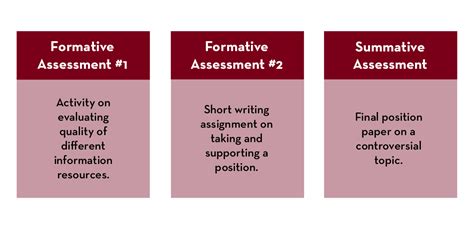
7. Implementing Effective Strategies: Tips and techniques for integrating both formative and summative assessments in educational settings.
Integrating both formative and summative assessments effectively requires strategic planning and a balanced approach. Start by using formative assessments regularly to monitor and support student learning throughout the instructional period. Incorporate various methods, such as quizzes, peer reviews, and classroom discussions, to gather continuous feedback and address learning gaps promptly. This ongoing feedback helps tailor instruction to meet individual student needs and fosters a dynamic learning environment.
Incorporate formative assessments seamlessly into your teaching routine by aligning them with learning objectives and providing timely feedback. Use this feedback to adjust teaching strategies and offer additional support where needed. This proactive approach ensures that students are constantly engaged and informed about their progress.
When planning summative assessments, ensure they are comprehensive and aligned with the learning goals of the course. Design these assessments to evaluate students’ cumulative understanding and skills, and provide clear criteria and expectations. Use summative assessments to measure overall achievement and guide decisions about future instruction and curriculum development.
Balance formative and summative assessments to create a well-rounded evaluation system. By integrating both types effectively, educators can support ongoing student growth while also measuring overall performance, leading to a more effective and responsive educational experience.
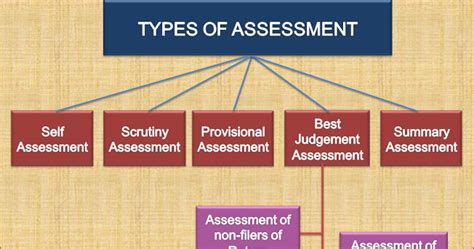
8. Challenges and Solutions: Addressing potential challenges in using formative and summative assessments and providing actionable solutions.
Utilizing formative and summative assessments presents several challenges that educators must address to ensure effectiveness. One common challenge with formative assessments is the time commitment required to provide meaningful feedback. To address this, educators can use digital tools and platforms that automate grading and feedback processes, allowing for more efficient and timely responses.
Another issue is ensuring that formative assessments are aligned with learning objectives and not just used as extra activities. Educators can overcome this challenge by clearly linking each formative assessment to specific learning goals and using the data to inform instructional adjustments.
For summative assessments, a major challenge is maintaining fairness and consistency, especially with high-stakes tests. To mitigate this, educators should develop clear, detailed rubrics and grading criteria to ensure that assessments are evaluated consistently. Additionally, incorporating a variety of summative assessment methods can help capture a broader picture of student achievement.
Finally, both types of assessments can sometimes lead to student anxiety. To alleviate this, educators should communicate the purpose and benefits of assessments clearly, emphasizing that they are tools for learning and improvement rather than just judgment. Providing a supportive environment and focusing on growth can help reduce anxiety and encourage a positive approach to assessment.
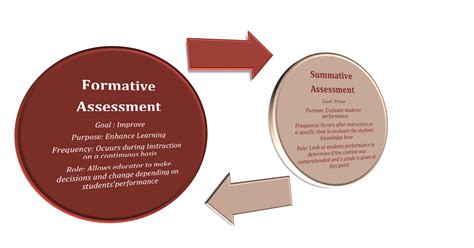
In conclusion, both formative and summative assessments are essential for a comprehensive evaluation of student learning and instructional effectiveness. Formative assessments support ongoing learning by providing real-time feedback and allowing for instructional adjustments, while summative assessments offer a final evaluation of student performance and curriculum success. By understanding their distinct roles and implementing effective strategies, educators can create a balanced assessment system that promotes student growth and achievement. Addressing the challenges associated with these assessments and applying practical solutions ensures that both types are used effectively, fostering a more dynamic and responsive educational environment.
gameshoek.com
